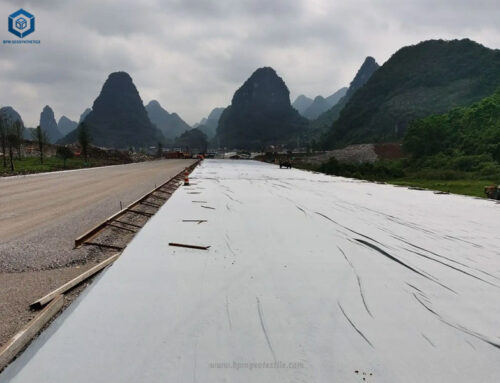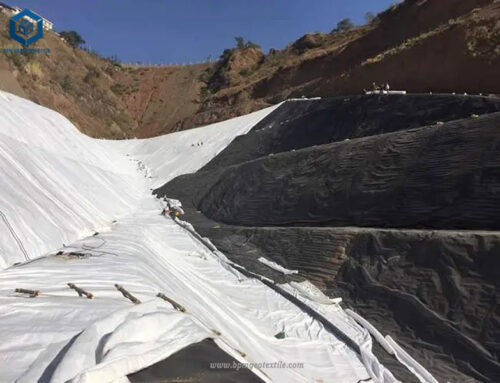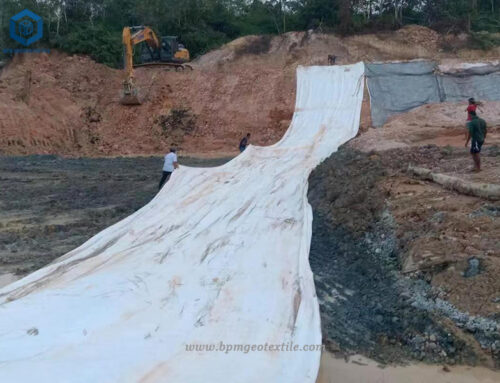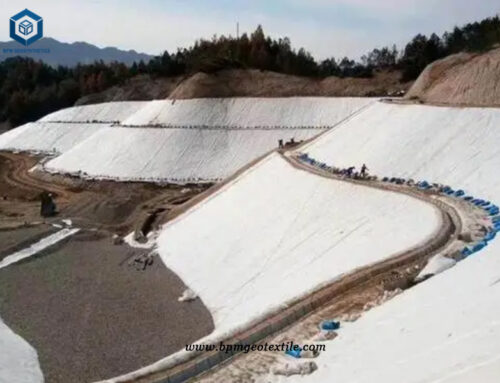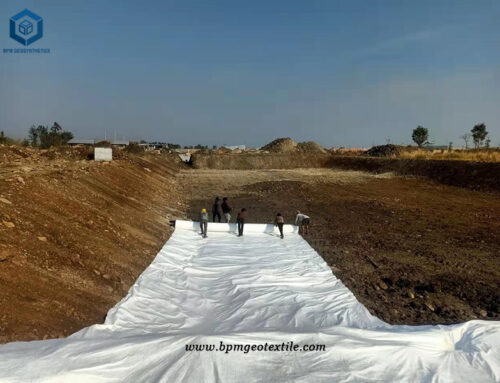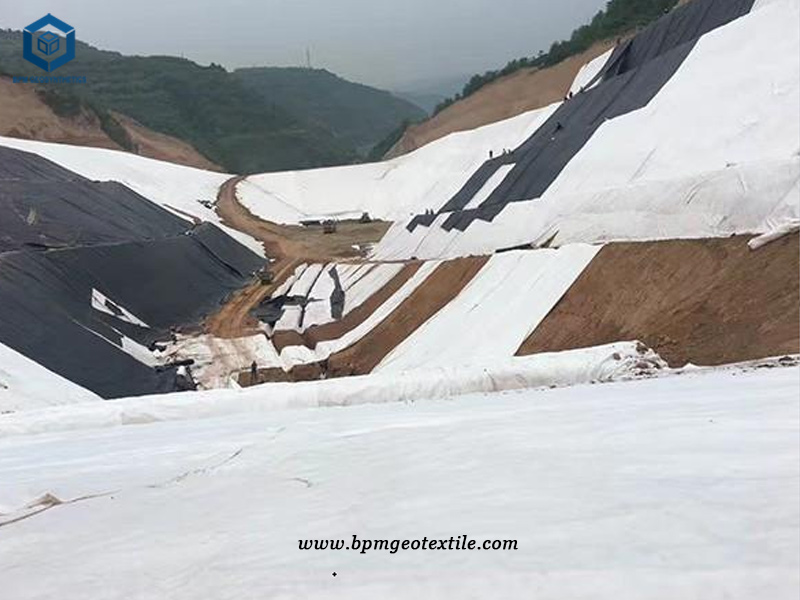
Non woven soil separator fabric, also known as non woven filament geotextile, is produced from polyester long fiber forming into net and consolidation with three dimension structure. The continuous filament non woven geotextile is the kind of new material in geotechnical and engineering project. Except for its good mechanical properties of tensile strength and puncture resistance, it also has good drainage ability, acid and alkali resistance and anti-aging. The wider opening size allows it has good separation, permeability, and filtration functions.
CASE STUDY
- Location : Peru
- Product(s) : Non woven Geotextile
- Application : Soil Separator Fabric for Tailings Treatment Project
Peru is rich in mining resources, and the mining and petrochemical energy industries are relatively developed. Peru’s economy is at the middle level in Latin America. It is a traditional agricultural and mining country. It is one of the world’s 12 largest mining countries. The reserves of copper, lead, zinc, silver, bismuth, rhenium and other mineral resources rank among the top five in the world. Mining and smelting takes an important position in the Peruvian national economy. But there are many hazards in tailings, so tailings treatment is particularly important.
Issue
The mining tailings produced contained a lot of water, slurry and sand, which generally could only be discharged into the valley near the mine site, and Taniguchi built a dam to intercept it to form a tailings pond.
So there existed multiple potential threats to the tailings pond:
1. The tailings contain a variety of beneficiation residues, which will slowly penetrate into the nearby soil and affect the mountains and vegetation;
2. The tailings in the tailings pond have large amounts of fine particles. Water content, due to poor management, rainfall, earthquakes and other reasons will cause dam break, after the dam break will cause artificial debris flow, safety risks are very serious.
3. There is a large amount of water accumulated in the tailings pond, which is a waste of water resources. Various influences have led to the need for the management of the tailings pond.
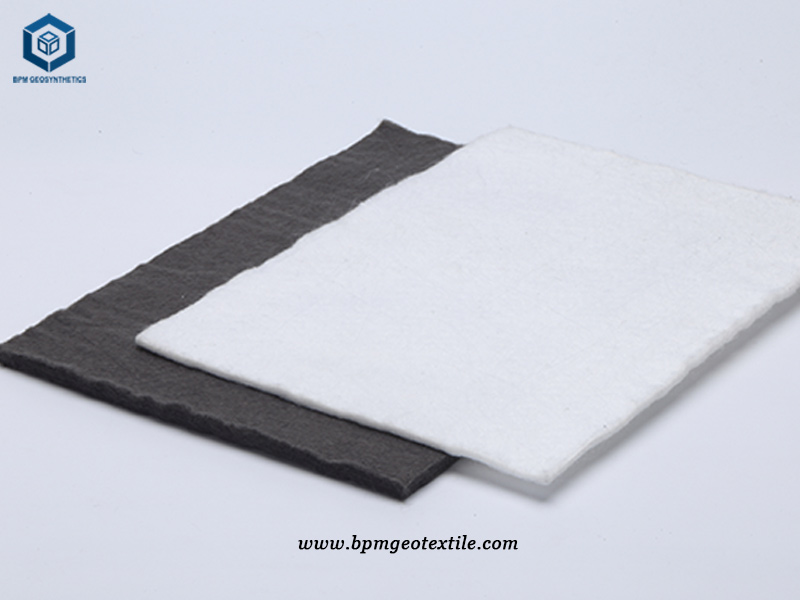
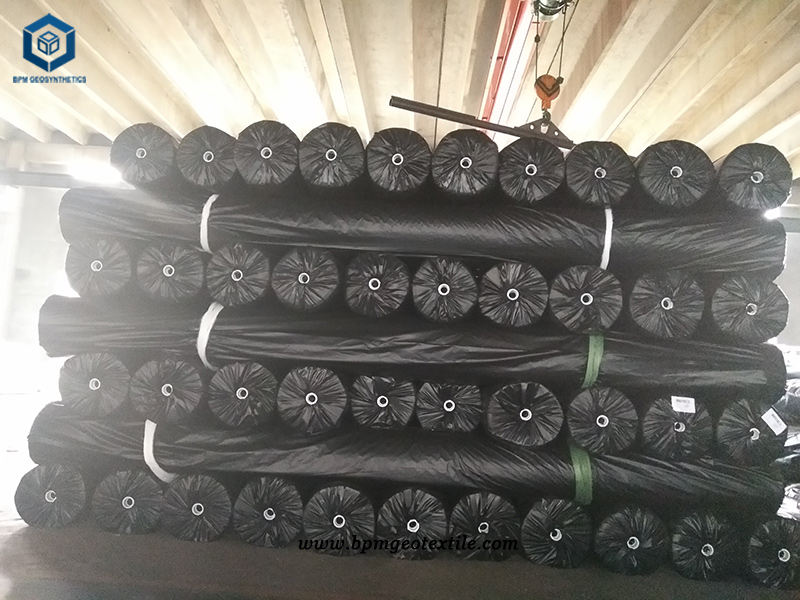
Solution
Non-woven geotextiles are classified into filament and staple fiber types. Filament geotextile is a cost-effective soil separator that is eco-friendly without chemical additives. It has good mechanical properties, water permeability, corrosion resistance, adaptability to uneven bases, and resilience to external damage. The continuous fiber geotextile is made of high-quality fibers like polypropylene or nylon. We recommended a 150gsm filament geotextile to our customer for its high tensile strength, low expansion coefficient, and wide temperature range. BPM advised inspecting the site before installation to ensure a smooth surface free of debris. Sizing and cutting are crucial steps, leaving extra width for adjustments during fixing. Proper fixation requires special tools and even stitching for a flat finish. After ensuring safety, the geotextile can be laid and installed.
Three bassic ways to install Geotextitle Soil Seperator Fabric
There are three laying methods for geotextiles: lapping, stitching, and welding. The overlap is about 25 cm, stitching width is 15 cm, and welding width is 20 cm. Before laying, measure the area and calculate overlaps and cutting losses. Geotextiles on slopes are laid top to bottom, perpendicular to the base. Ensure cloth-to-cloth width for easy connection. When combining with a membrane, bury both in the anchor ditch to prevent sliding. After installation, inspect visually and mark repair areas to avoid oversights.
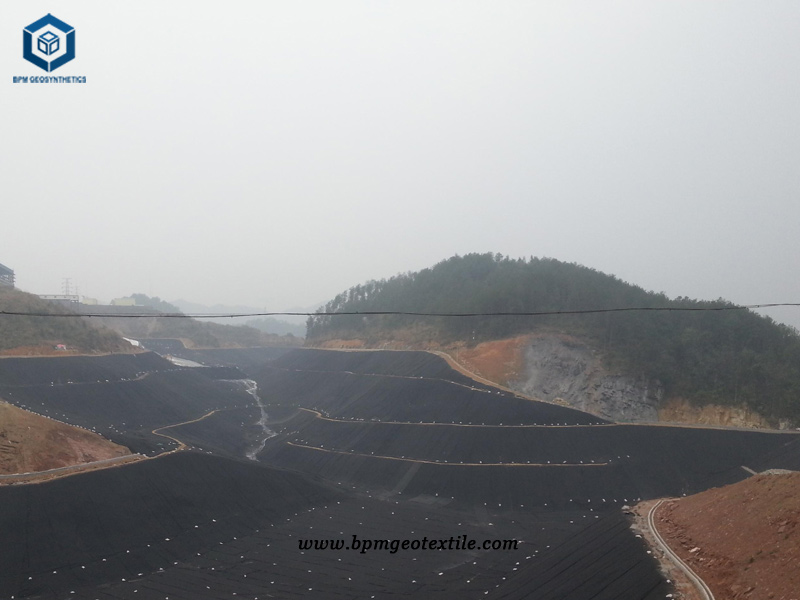
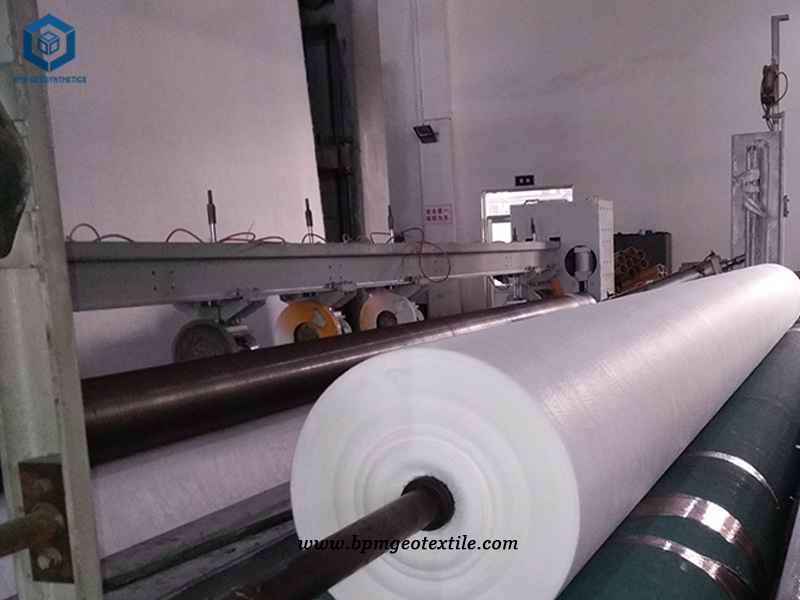
Benefits
- The geotextile fabric isolates soil components, preventing mixing for long-term stability, frost resistance, and load-bearing capacity in construction. It offers durable isolation.
- Non-woven geotextiles filter effectively, resist corrosion, and promote water drainage without soil loss, enhancing stability.
- These fabrics reliably drain surfaces in geotechnical engineering due to their fluffy structure, controlling water flow efficiently.
- Non-woven geotextiles provide excellent protection by resisting punctures, extending, and safeguarding waterproof layers from damage.
- The fabric’s flexibility and strength boost project stability and overall strength, enhancing performance.
Summary
Filament geotextile soil seperator fabric has good mechanical functions, good separation function, water permeability, high strength, and its tensile strength is higher than staple fiber needle-punched non-woven fabrics under the same weight specifications; corrosion resistance, anti-aging, isolation, filtration, The performance of drainage, protection, stability, and reinforcement can be adapted to uneven bases, can resist damage caused by external construction forces, have low creep, and can still maintain its original functions under long-term loads. Moreover, it has a good elongation under a certain stress, which can adapt to the uneven base surface; it can also ensure the three-dimensional porosity of the geotextile, which is conducive to the realization of excellent hydraulic properties. It is very suitable for projects such as tailings treatment and garbage filling.
Specifications of Non Woven Filament Soil Separator Fabric for Tailings Treatment Project in Peru
- Total geotextile quantity – 90,620 squares meters
- Geotextile Weight – 150gsm
- Each roll size is 6m*100m
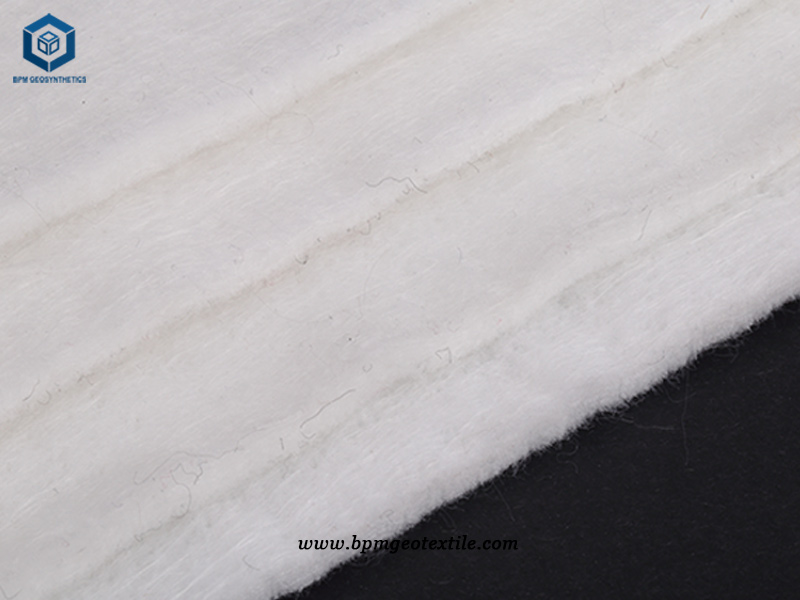
About BPM
BPM manufactures and wholesales many types of effective and states of the art geotextile, geomembrane, and other geosynthetics to over 36 countries. BPM geosynthetic products are widely used across a variety of industries including waste containment, water containment, aquaculture, industrial project, energy project and mining projects, etc. BPM main customers are from Australia, France, Sweden, UK, Hungary, New Zealand, Poland, Mexico, Ecuador, Brazil, Pakistan, Bangladesh, Thailand, Vietnam, Malaysia, Indonesia, Singapore, Philippines, Sri Lanka, India, UAE, Saudi Arabia, Qatar, Kenya, etc.
BPM is not only manufacturing best quality geosynthetic products but also providing professional design and installation service. OEM, ODM, custom development and fabrication are also available. If you have any questions or inquiries, please fill and submit the following form, we will reply as soon as possible.

